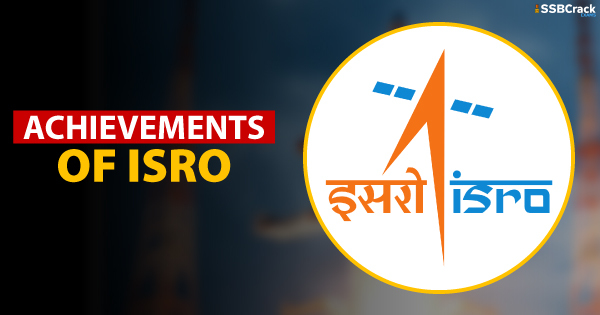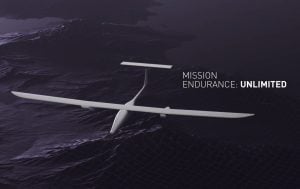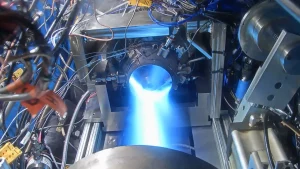The Indian Space Research Organisation or is the national space agency of the Republic of India, headquartered in Bengaluru. It operates under the Department of Space which is directly overseen by the prime minister of India while the chairman of ISRO acts as the executive of DOS as well.
- GSAT-30: On 17 January 2020, GSAT-30 was successfully launched into a Geosynchronous Transfer Orbit (GTO) from Kourou launch base, French Guiana by Ariane-5 VA-251 launch vehicle. It is India’s telecommunication satellite and was launched to replace INSAT-4A spacecraft services with enhanced coverage. The satellite is configured on ISRO’s enhanced I-3K Bus structure to provide communication services from Geostationary orbit in C and Ku bands.
- EOS-01: On 7 November 2020, EOS-01 was successfully launched into a Low Earth Orbit (LEO) from Satish Dhawan Space Centre (SDSC) SHAR, Sriharikota by PSLV-C49/EOS-01 launch vehicle. It is India’s earth observation satellite and is launched for applications in agriculture, forestry, and disaster management support.
- CMS-01: On 17 December 2020, CMS-01 was successfully launched into a Geosynchronous Transfer Orbit (GTO) from Satish Dhawan Space Centre (SDSC) SHAR, Sriharikota by PSLV-C50/CMS-01 launch vehicle. It is India’s communication satellite envisaged for providing services in the Extended-C Band of the frequency spectrum which includes the Indian mainland, Andaman-Nicobar & Lakshadweep Islands. It is India’s 42nd Communication Satellite.
- Chandrayaan-2, the indigenously designed spacecraft, is expected to touch down on the moon’s south pole surface in the early hours of September 7. Isro’s second lunar mission is a Rs 978 crore project – Rs 603 crore for the spacecraft and Rs 375 crore for the GSLV Mk-III. Chandrayaan-2, with a total mission mass of 3.8 tonnes, consists of an orbiter, a lander (Vikram), and a rover (Pragyan).
- Isro, in its third mission of the year in May this year, successfully put into orbit an earth observation satellite that can see through thick clouds and enhance the country’s surveillance capabilities in military and civilian sectors to keep an eye also on terror camps across the border in Pakistan. Dubbed as a ‘spy’ satellite, RISAT-2B (Radar Imaging Satellite-2B) will replace its predecessor RISAT-2 which has been actively used by India to monitor activities in terror camps across the border in Pakistan to thwart infiltration bids by terrorists. RISAT was successfully launched in 2009.
- The agency launched its 100th satellite along with 30 others in a single mission on January 12, 2018, from Sriharikota in Andhra Pradesh. Thirty-one spacecraft, including weather observation Cartosat-2 series satellite, were launched by PSLV-C40. Out of the 31, 28 satellites were foreign, while three were from India.
- Isro garnered international attention on February 15, 2017, when it launched 104 satellites using the Polar Satellite Launch Vehicle (PSLV), an indigenous rocket. The successful launch from Sriharikota managed to put these satellites into their desired orbit in one go. There were 101 foreign satellites out of the 104 launched. It also included the Cartostat-2 series, India’s earth observation satellite.
- The seven-satellite system created India’s very own satellite navigation system that could potentially offer services like terrestrial and marine navigation, disaster management, vehicle tracking, and fleet management, a navigation aid for hikers and travelers, visual and voice navigation for drivers. The launch of the seventh navigation satellite brought India much closer to the ‘GPS club’. Experts said an Indian-owned system will be particularly useful in times of war to gain positional accuracy.
- Isro launched 20 satellites in one mission, a personal best for the space agency. Apart from the space agency’s own satellites and those built by university students in the country, the mission carried satellites from the US, Canada, Germany, and Indonesia.
- Isro successfully tested the Reusable Launch Vehicle — Technology Demonstrator (RLV-TD), which was built on a budget of Rs 95 crore. The winged flight vehicle — dubbed as India’s space shuttle — that glided back onto a virtual runway in the Bay of Bengal in a 10-minute mission was the first stage of a fully reusable vehicle. A reusable launch vehicle can bring down launch costs by up to ten times.
- India joined an exclusive global club when it successfully launched the Mars Orbiter Mission on a shoestring budget that was at least ten times lower than a similar project by the US. Only the United States, Russia, and Europe have previously sent missions to Mars, but what made India’s achievement stand out was that it succeeded on its first attempt, which even the Americans and the Soviets could not. The Rs 450-crore project revolved around the Red Planet and to collect data on Mars’ atmosphere and mineral composition.
- India’s first unmanned lunar probe was launched almost a decade ago and was a landmark in India’s space mission. ISRO joined an elite list of just six space organizations to send an orbiter to the moon. A Tricolour was hoisted on the moon but the space agency lost contact with Chandrayaan-1 soon after.
- It was developed in the 1990s and has become the Indian space mission’s most reliable workhorse. The PSLV carried out its first mission in 1993 but its first successful outing was the next year. For the next 20 years, it launched various satellites for historic missions such as the Chandrayaan and Mangalyaan. PSLV remains a favorite among various organisations as a launch service provider and has launched over 40 satellites for 19 countries.
- Chandrayan-3: It is expected to launch in 2021 and is a successor to the Chandrayan-2 mission. The mission will attempt a soft landing on the lunar surface and will have a Lunar lander and rover. According to ISRO, the total cost of the Chandrayan-3 mission will be more than 600 crores.
These are the achievements of ISRO that as an Indian we are proud of today. It is our earnest hope that ISRO continues to grow and make India an important power in the space race.
ALSO READ:



















